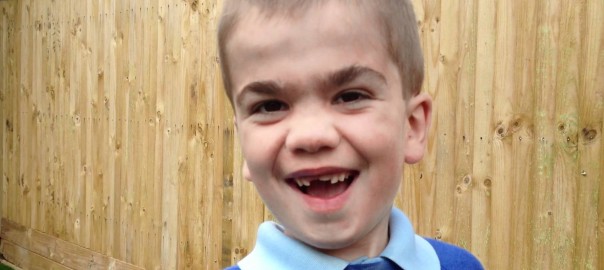Fatal Childhood Disease to be Challenged by Stem Cell Therapy

Disease is always devastating, but childhood disease in particular is heartbreaking beyond what words can describe. It seems so unfair that innocent children are forced to suffer from terrible diseases with few treatments and no known cures. The growing potential of stem cell therapy recently inspired scientists at the University of Manchester in England to develop a pioneering approach to treat Sanfilippo disease. Now that same team of researchers is teaming up with a new therapeutics company to conduct human trials to see if the stem cell gene therapy can indeed make a true difference.
What is Sanfilippo Disease?
Most people have never heard of Sanfilippo disease, but this rare metabolism disorder is present in one in every 70,000 births. The disease forms when one single cell suffers a defect that prevents the body from producing the enzyme needed to properly break down long chains of sugar molecules. It’s a sneaky condition that doesn’t present itself immediately. Some children make it until preschool before the three stages of delays and deformities begin.
A child with Sanfilippo will first struggle with delayed speech skills and demonstrate unique facial characteristics like a large head, prominent forehead, short neck, and coarse hair. Affected children tend to have more sinus and ear infections as well. In the second stage of Sanfilippo, the child exhibits restlessness and difficult behavior like inconsolable temper tantrums, inappropriate grabbing, chewing, and screaming, and possible visual and hearing problems. The disease gradually takes a traumatic toll on the child as he or she loses communication skills and ultimately stops being able to walk, eat, and talk as the body shuts down.
Without some form of treatment, people with Sanfilippo have died as young as three or as old as 30.
New Stem Cell Treatments Battle Sanfilippo
A new clinical stage biotechnology company named Orchard Therapeutics is now working to test the new stem cell gene therapy in humans. The University of Manchester scientists can now utilize the techniques they developed through research and apply them in trial in an attempt to treat the early onset dementia that Sanfilippo patients experience. The ultimate hope, of course, is to save the lives of all affected children in the future.
Leader of the Stem Cell and Neurotherapies Laboratory at the University of Manchester, Dr. Brian Biggler, explained, “If we can show that it is possible to treat a single gene brain disease, such as Sanfilippo, with stem cell gene therapy, this will pave the way for treating other lysosomal storage and neuro-metabolic disorders.”
This treatment in particular corrects a child’s stem cells at the genetic level and then implants the cells into bone marrow. This is supposed to generate blood cells that send the brain the corrected versions of the missing enzyme that causes the entire disease. Only time will tell whether theory can prove sustainable in practical application.
Sources
https://www.sciencedaily.com/releases/2016/05/160510213544.htm


